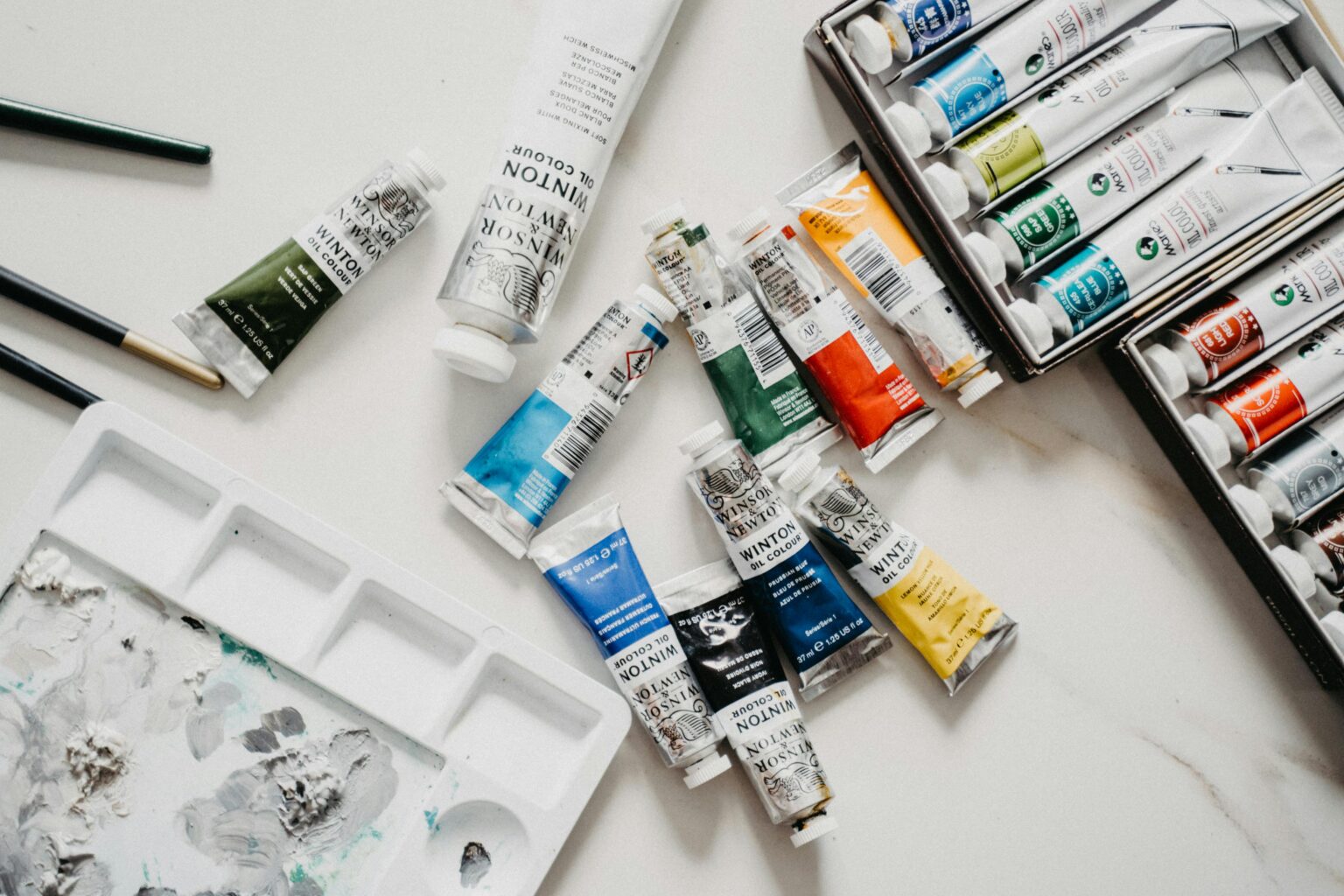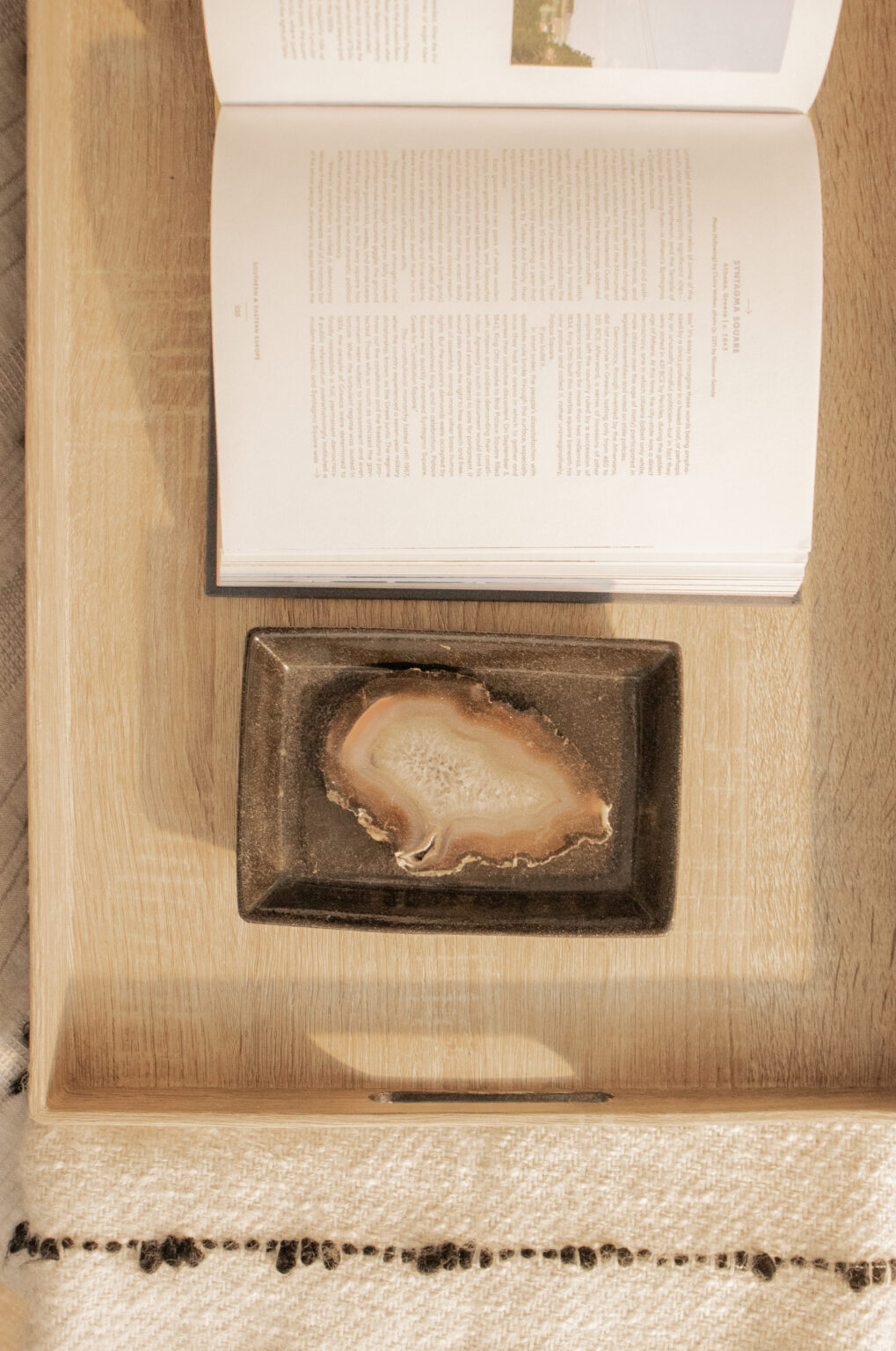Breaking into the world of PR can feel like stepping onto a stage you’re not sure you belong on. You might wonder if your story is “big enough” or if you need a following before you even get started. The idea of reaching out to journalists or landing media coverage probably feels both thrilling and intimidating — and that’s okay!
Here’s the truth: You don’t need a press team or a polished background to start getting noticed. What you do need is a clear sense of your story and the confidence to share what makes your work meaningful.
What is PR, really?
Public Relations (PR) is about earning trust, building credibility, and increasing visibility for your brand. But it’s no longer limited to stiff, formulaic press releases or calculated responses when bad news comes out.
Modern PR is rooted in authentic storytelling and encourages you to share your expertise often, in ways that genuinely resonate with your audience.
Earned media is a huge part of modern PR. Unlike paid media (ads) or owned media (your blog), earned media refers to podcast spots, magazine features, interviews, and speaking engagements — coverage you earn by leaning into your expertise, insights, or story.
Of course, PR is just as much about what you put out as it is about managing how it’s perceived, especially when social media means news and opinions can circulate in minutes.
Planning your DIY PR strategy means thinking about what, when, and where you’ll share news and value, and how you’ll engage with the good (and bad) conversations happening around your brand.
Why is earned media and PR so valuable?
The validation and thrill of gaining recognition can feel like a milestone of its own, but chasing exposure that doesn’t serve your bigger vision will leave you exhausted once the novelty wears off. Believe me, that’s a very common mistake in PR!
Earned media and PR are meant to serve a deeper purpose: Building your reputation and growing your business. Every piece of coverage you pursue should move you closer to where you want to go. That means increasing your visibility, amplifying your message, and connecting with your audience in a way that feels organic and authentic.
Instead of chasing metrics like likes or shares, focus on PR opportunities that:
- Position you as a thought leader in your industry
- Put your expertise or product in front of the people who need it most
- Create connections that will last long after the buzz dies down
But the real secret to success? Adopting a balanced strategy that amplifies your PR efforts by leveraging the other channels too: Shared media to expand conversations and owned media (like your website and email list) to turn all that attention into something meaningful, like sales!
How to DIY Your Public Relations Strategy
PR is not as intimidating as it seems, and it’s one of the most worthwhile investments you can make for your business. But, because you don’t have a whole PR team, laying out a strategy is vital to making an impact and making the most of your resources.
“Media-First Marketing” is the scalable PR framework that I created for my Fortune 500 clients and it’s the approach I recommend for solopreneurs, bootstrapped founders, and non-profits. So let’s walk through the crucial first steps to implementing a media-first marketing strategy of your own.
#1 Prepare for Success
Ask yourself, what do you want PR to achieve for your business? Whether it’s building credibility, connecting with new audiences, or launching a product, knowing your primary “why” will guide your outreach.
If you don’t already have an elevator pitch, craft one. It’ll give you clarity about your personal brand, and come in handy when it’s time to reach out to editors, hosts, and event organizers. This is also the time to make sure your mission statement and brand personality are sorted.
Here are some extra tips:
- Upgrade your email — Create a signature that links to your socials and website. Add a profile photo if you don’t have one. Use a custom email address (yourname@yourbusiness.com) if you can.
- Polish your image — Your social media accounts (especially LinkedIn) should be complete, current, and consistent. Journalists and people who see you in the media will definitely look you up!
#2 Build Your Foundation
You know what I said about adopting an intentional PR strategy; one that prioritizes measurable business results instead of vanity? Everything you create outside of earned media is essential to making that goal a reality.
Your “owned” content — whether that’s blog posts, resources, videos, a podcast, or an email list — creates a meaningful place for people to land after they see you in the media. It also serves as the crucial bridge between someone “seeing you” and actually becoming a follower, lead, and (hopefully!) a customer.
The content you create can also serve as a portfolio of sorts, showcasing your story and expertise for editors and hosts who are screening you to see if you’re a good fit for their outlet.
- Choose a call-to-action — What step do you want people to take after they see you in the media? Should they follow your socials? Join your email list?
- Plan a content funnel around your CTA — Create a funnel by building out resources (social posts, blog posts, landing pages) that nudge people toward taking that action.
- Extend your website — Create an ‘About Me” page that tells your story and showcases your background, education, testimonials, and media mentions. Link to this page in your outreach.
#3 Pitch With Purpose
Early on, you might only be able to appear on niche blogs and small podcasts and, while these opportunities might not seem that glamorous, they play a crucial role in establishing your authority (and building your confidence).
When you consistently show up and deliver value, you’ll be able to leverage those small wins to land more prominent features, creating a snowball effect that strengthens your credibility.
But, saying yes to every opportunity will lead to burnout and it can steer you off course. This is especially good to remember when “bigger” opportunities start to come along; remind yourself that more exposure doesn’t necessarily mean better exposure.
- Don’t stretch yourself thin — It’s better to have a few high-impact appearances that align with your brand than dozens of scattered mentions.
- Trust your intuition — If something just doesn’t feel right (even if it looks good on paper), it’s okay to say no. Guard your time and brand.
#4 Be Your Tailored Self
Being authentic to your brand doesn’t mean being rigid. In fact, one of the most powerful skills you can develop is the ability to adapt your style for every outlet and opportunity. The tricky part? You should still be unmistakably you!
Being adaptable shows professionalism and increases your chances of getting a pitch accepted. It also makes your stories more intriguing and relatable to the audiences you get in front of.
Don’t think about it as changing your voice or style, but your tone and language. For instance, you might remain your funny or edgy old self, but you’d lean more into data for a scientific/business outlet or more into personal anecdotes and stories for a lifestyle outlet.
- Strengthen your brand’s personality — Practice reframing your language for different audiences and figure out what feels true to you. Leaning into an outlet’s style doesn’t mean erasing your own.
- Focus on your core values — Think about your core values and then create a short list of topics you’re highly passionate about that can flex to fit different angles or outlets.
#5 Repurpose & Amplify
Consider amplification an un-skippable step in your PR strategy. This isn’t just about celebrating the win (though you absolutely should); it’s about getting your credible, relevant, and in-demand content in front of more eyes.
First, amplify your PR and earned media by talking about it on your social channels, website, and email newsletter. A month or two later, add it to the pool of content that you plan to periodically reshare — and repurpose.
- A podcast or TV interview can be turned into a blog post talking about your experience on the show.
- Your favorite moments can be edited down and shared on TikTok, Reels, or Shorts.
- Quotes and data points can be turned into Instagram and Pinterest posts.
The goal of a “circular” content strategy is to maximize the shelf life of what you create while reinforcing your message in fresh and engaging ways. And, with an intentional creation strategy, it’ll truly feel effortless.
Bonus: Create a Media Kit
A media kit makes it easy for journalists, podcast hosts, and other collaborators to get your features published sooner. By organizing everything a busy media professional needs (like your title, bio, and headshot) into a polished package, a media kit eliminates back-and-forth and helps you create a more consistent image for yourself.
Include these essentials:
Your Bio: A mini, short, and full-length bio to cover all your bases (here’s a guide on how to write them). Your bio might be used when you publish a guest post, get featured on a podcast, or join a panel.
Your Byline: State your preferred name, title, and business name so no one has to reach out and clarify what your byline should look like.
Key Links: Include links to your website, LinkedIn, and other active platforms. This makes it easy for media professionals to learn more about you and some outlets may want to include these links alongside your feature.
Headshot: Add a high-quality, professional-looking photo. This may be used for thumbnails, social media posts, and alongside your byline/bio, so make sure you love it!
Notable Highlights: Share any “clips” or past media features you’re proud of. If you’re just starting out, list major accomplishments and projects. A host might mention these to introduce you to their audience.
Contact Information: Be sure to include your email address and any other contact methods so hosts, editors, journalists, and producers can easily reach you.
You can save your media kit as a PDF and attach it to your emails or make it a page on your website. Over time, you can build it out with additional sections, but be sure to keep it accessible for the busy teams you’ll be collaborating with.
Best Practices for PR & Earned Media
Here’s some more advice to help you get started as your own DIY PR agent.
Focus on Serving, Not Selling
No outlet wants to feature a sales pitch; they want insights, stories, and expertise that creates real value for their audience. Be generous with your knowledge and experience — I promise it won’t run out!
But, I hear you asking: If I don’t sell, how will PR move the needle for my business? This is where the magic of content marketing happens. Your features should establish your credibility, give valuable takeaways, and naturally build interest in your work.
If you’re new to the concept of content marketing or “serving before selling,” check out my guide that features amazing examples (like how John Deere grew with its OG content marketing strategy in 1895!).
Don't Lose Track of Your Pitches
A spreadsheet will make a world of difference when it comes to the success of your PR efforts.
First, it’ll help you understand what makes for a winning pitch so you can keep refining your approach. Second, it allows you to stay ahead of outstanding pitches and follow-ups, increasing your win rate and giving you the chance to reuse pitches that weren’t accepted or didn’t get a response.
Perhaps most importantly, tracking your pitches will help you analyze the impact of all those wins, answering key questions like: Are certain outlets, formats, or themes driving more traffic? Which media hits are leading to engagement or conversions?
Master The Art of Follow-Up
Most people won’t respond to a pitch on your first attempt; not because they’re uninterested, but because they’re very busy and get hundreds of work-related emails every day. A well-timed nudge shows you’re proactive. But, remember, your goal is to make their job easier, not to pressure them into a decision.
Keep your follow-up brief, polite, and helpful. Include your original pitch, add a small but compelling new detail, and reiterate why your idea is a good fit for their audience.
A good rule of thumb is to follow-up about 9-10 days after your first email. If you don’t get a response to that, send a second and final follow-up about a week after that. If another week goes by without a response, consider it safe to send your pitch elsewhere. But don’t cross this person off your list! Keep sending them excellent pitches to build rapport.
Stay Ahead of Media Cycles
Journalists and outlets are always looking for timely and relevant stories, and understanding the media cycle will give you an edge. For example, holiday-related content should be pitched months in advance — sometimes as early as July or August!
The media cycle differs for print vs. digital and varies by format. For instance, spots in a holiday issue of BH&G will generally be finalized sooner than guest slots for a TV show like Good Morning America. Luckily, most editors and hosts are fairly transparent about when they need what, but it’s better to be early if you’re unsure.
Invest in Building Relationships
Staying on the radar of the hosts, editors, producers, and journalists you cross paths with will open the door to future collaborations and keep you top of mind when someone comes to them asking about an expert in your field. And here’s a secret: It’s pretty fun!
Start with the people you’re cold pitching. Share good ideas, follow-up, and express appreciation for their time. When you’re given an opportunity, over-prepare yourself, stay ahead of schedule, explain your decisions, and ask for their input. They’ll remember that you made their job easy!
Once you’ve made that a habit, start expanding your relationship building to the people you dream of working with. Engage with them in small ways: Comment on their articles, share their articles, and respond thoughtfully to their social posts. Don’t do it for the sake of it; do it because their work genuinely interests you.
Naturally, when it comes time to pitch an idea, you’ll be able to reference something that person has said or done that resonates with you. Over time, these gestures add up, taking you from being yet another cold email in their inbox to a recognizable name.
- DIY PR: How to Earn Media Exposure for Yourself
Common Questions
Still curious about implementing a DIY PR strategy? Here are a few common questions that will help you sort out your plan.
What if I don't feel ready for media exposure?
You don’t need an existing following and you don’t need connections. Start small and learn as you go. Don’t wait until you feel like you “know enough” (because you never will).
Think back a couple years and consider everything you’ve learned since then — there are plenty of people feeling stuck in that same spot right now and you can help them. Expertise doesn’t mean having all the answers. Focus on how you can get someone from A to B.
How do I handle rejection or my pitches being ignored?
Outlets simply can’t respond to every pitch — much less accept them all — so never take a “negative” outcome personally. Thank the person for their time, even if they never responded to your emails, and keep them on your list until you hear otherwise.
What’s the simplest way to get my first feature?
Persistence is everything. Identify a small, niche outlet that aligns with your expertise. Reach out and tell them what you want to talk about and how it would benefit their audience. Rinse and repeat until you get your first feature!
Once you get a few features under your belt, you’ll use those as examples to help you bolster pitches to more recognizable outlets. As you gain recognition and credibility, people will soon start coming to you with ideas of how they can feature your expertise.
- Explore The Media-First Marketing Model
What's Next?
I know it can feel intimidating, but remember: You don’t need to be a PR expert to get meaningful exposure. With a clear strategy, a little patience, and a focus on serving others, you can make lasting connections and get your story out there. The path might not always be linear, but the key is to keep going. Check out my other guides and resources for more help.
- The Media-First Marketing Model
- Circular Content: How to Repurpose With Intention
- How to Write a Winning Pitch
- The Essential Posts + Pages Your Site Needs
- Getting Started with Email Marketing





